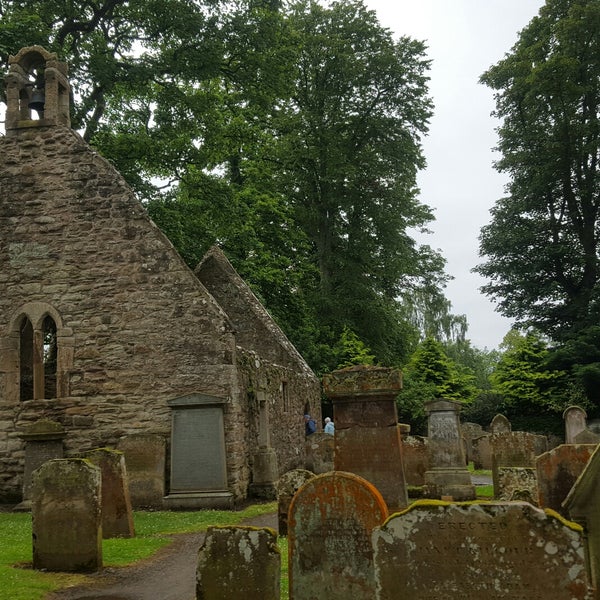
Alloway Auld Kirk Historic Site
Alloway Auld Kirk, built in 1516, is about 50 yards north of the Brig O Doon Hotel. This is where Robert Burns had his Father buried. The Headstone is not the original as damage by souvenir hunters meant it had to be replaced. Large Side Image Alloway Parish Church, built in 1858, is directly across the road from the Auld Kirk.

ALLOWAY AULD KIRK A Bit About Britain
Alloway Auld Kirk ' When, glimmering thro' the groaning trees, Kirk-Aloway seem'd in a bleeze; ' [ Tam o' Shanter, 1790] Visit the graves of Burns's father and younger sister in this 16th-century church ruin, ' where ghaists and houlets nightly cry '. The 16th-century church was already a ruin by Burns's time.

Alloway Auld Kirk Hidden Scotland
Coordinates: 55.43°N 4.636°W Alloway ( Scottish Gaelic: Allmhaigh, pronounced [ˈal̪ˠavaj]) is a village in South Ayrshire, Scotland, located on the River Doon. It is best known as the birthplace of Robert Burns and the setting for his poem "Tam o' Shanter".

Alloway Auld Kirk, Alloway, Ayr, South Ayrshire See Around Britain
Alloway Auld Kirk. Scotland, Europe. Southern Scotland. Near the Robert Burns Birthplace Museum are the ruins of the kirk, the setting for part of Burns' verse tale 'Tam o' Shanter'. Burns' father, William, is buried in the kirkyard; read the poem on the back of the gravestone. Read more.

Alloway Auld Kirk Hidden Scotland
The Alloway Auld Kirk, which dates back to the 16th Century, is a ruin in Alloway, South Ayrshire, Scotland, celebrated as the scene of the witches' dance in the poem "Tam o' Shanter" by Robert Burns. William Burnes, father of the poet, is buried in the graveyard together with his wife Agnes and daughter Isabella as well as two of his nieces.
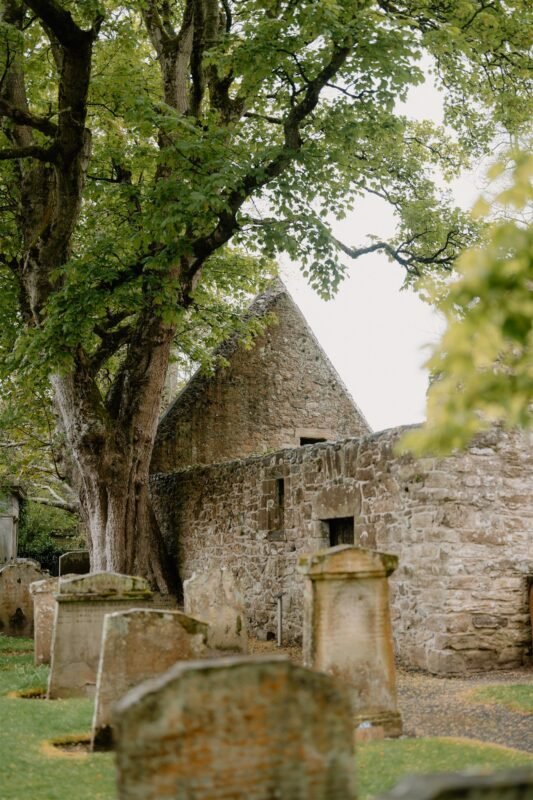
Alloway Auld Kirk Hidden Scotland
Title "Alloway's Auld haunted Kirk," famous in Burns' poems, Ayrshire, Scotland; Names International View Co., publisher
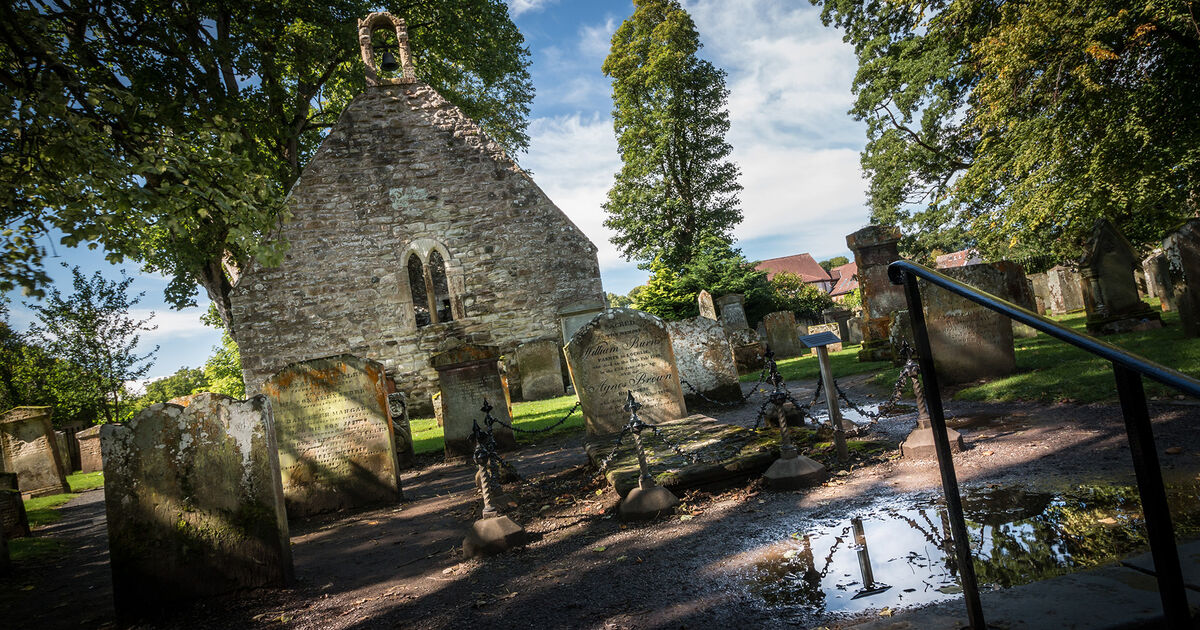
Alloway Auld Kirk National Trust for Scotland
After leaving the Burns Cottage, it's only a 10 minute walk to Alloway Auld Kirk. The kirk dates back to the 16th century and is where Robert Burns' parents and sister are buried. Their graves are clearly marked by the entrance of the kirkyard. When the Burns family lived in Alloway, the kirk was already in ruins.

Alloway Auld Kirk Historic Site
The 16th-century Alloway Auld Kirk in Ayrshire is probably the most famous small church in Scotland. Already a haunting ruin by the time the poet Robert Burns was born in the village, this church that he would have known well as a child, became the scene of his most famous story - Tam o' Shanter.
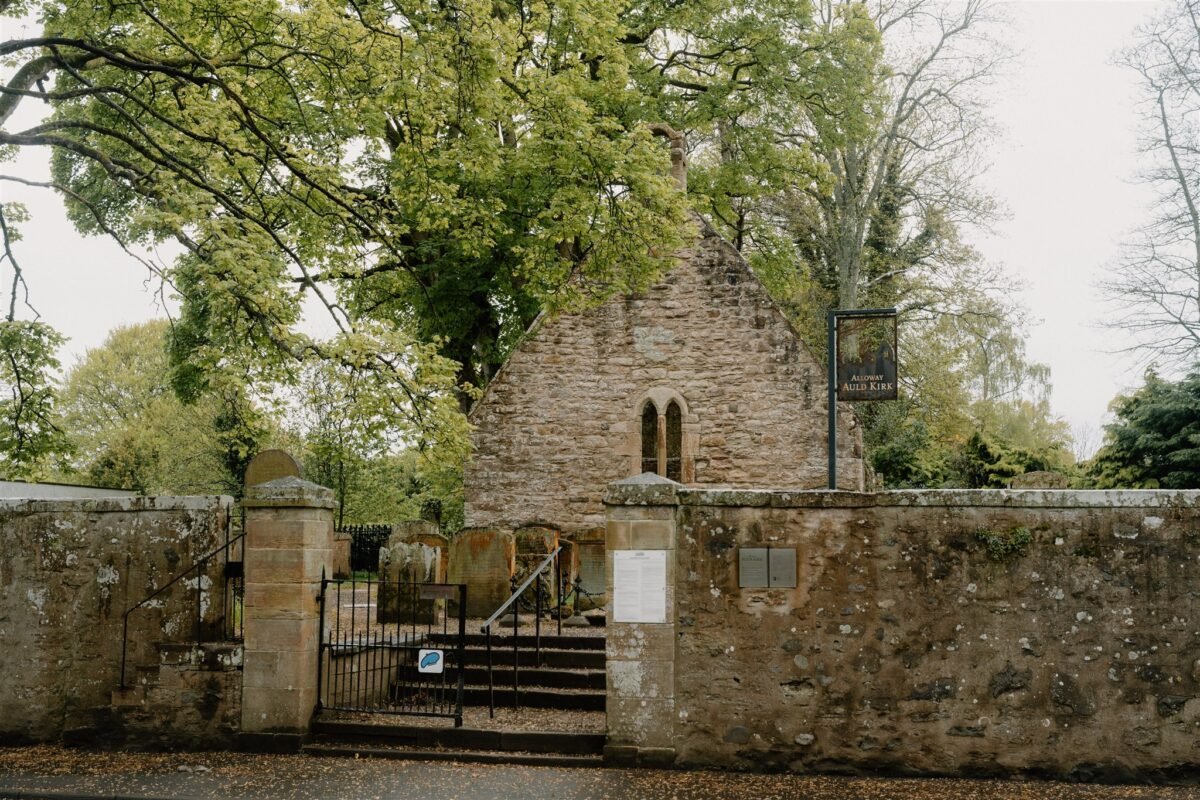
Alloway Auld Kirk Hidden Scotland
The Alloway Auld Kirk, which dates back to the 16th Century, is a ruin in Alloway, South Ayrshire, Scotland, celebrated as the scene of the witches' dance in.
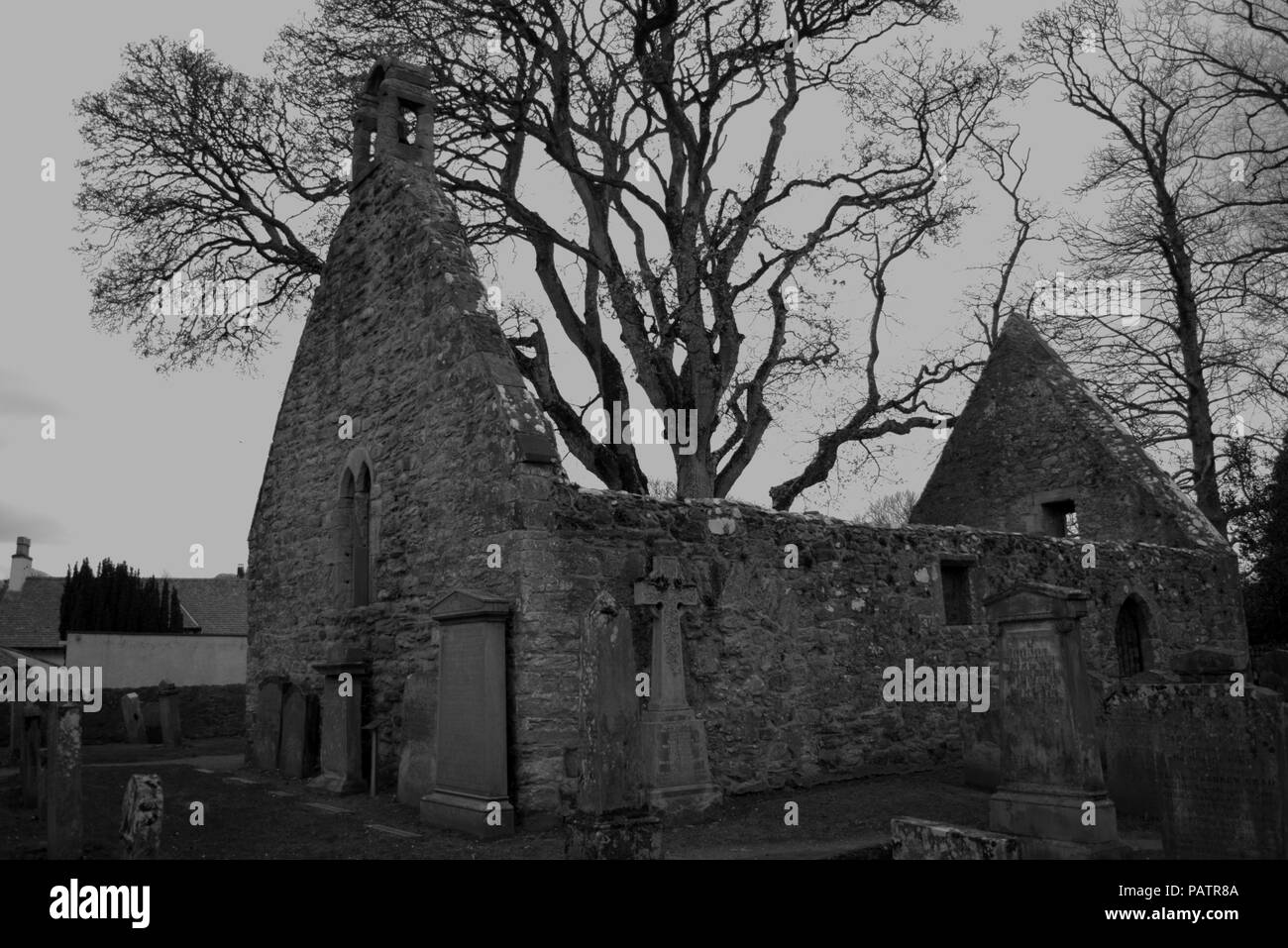
Alloway Auld Kirk in black and white Stock Photo Alamy
23 Oct 2018 A kind of magic Written by Billy Young Alloway Auld Kirk, where Tam o' Shanter witnessed a supernatural scene Many of the properties where the South West Team have worked are connected in some way to Robert Burns. These places are also linked to another curious aspect of 18th-century society - superstition.

Alloway Auld Kirk & The Tale of Tam o Shanter Hidden Scotland
Alloway Auld Kirk is the most important site in terms of action in the poem. Early pilgrimage guides made clear that: 'The Tam o' Shanter experience was as important, if not more so, than visiting the birthplace'. Unlike Burns Cottage, the kirk was an early tourist must-see, as it had been popular since the publication of the poem five.

Alloway Auld Kirk Historic Site
The walkable landmarks surrounding the museum include Burns Cottage, Monument Gardens, Auld Kirk Graveyard, Poet's Path and The Brig o' Doon. Alloway was the most special place in Burns life and remains special today. Alloway is the ideal starting point for anyone following in Burns footsteps. The beating heart of the poet, the bard's.

Alloway Auld Kirk Scotland travel, Scotland, Ayr
The Alloway Auld Kirk, which dates back to the 16th Century, [1] is a ruin in Alloway, South Ayrshire, Scotland, celebrated as the scene of the witches' dance in the poem "Tam o' Shanter" by Robert Burns. The kirk ruins and William Burnes 's grave Robert Burns

Alloway Auld Kirk Ayr, Scotland nigel cole Flickr
Alloway Auld Kirk. Famous for its portrayal in Burns' most loved and famous poem, Tam o'Shanter, where witches danced to the devil's bagpipes, the ruins are more or less exactly as Burns will have experienced them in the 18th century. It is also the location of William Burnes' grave.

Alloway Auld Kirk Hidden Scotland
Alloway Auld Kirk. Though now eroded and left to ruins, the Alloway Auld Kirk is an unlikely pilgrimage site for lovers of the Scottish bard, Robert Burns. A Category-B Listed churchyard, the kirk appeared in the Burns poem "Tam o' Shanter", where the witches danced. It's also the resting place of both Burns' parents and his sister.

Alloway Auld Kirk The Alloway Auld Kirk, which dates back … Flickr
Tam o' Shanter. Completed in 1790 (having taken a full year to write), this poem has cemented the fame of the little village of Alloway. Widely regarded as Burns's masterpiece, Tam o' Shanter embodies the best of Burns - his wit, wisdom, humanity and searing observations of character. Written in a mixture of Ayrshire dialect and English.